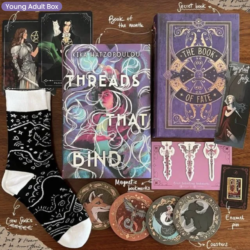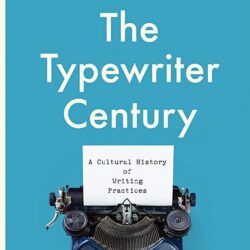Earlier this year I wrote a piece for SHARP news on the new Penguin Books Vending Machine at Exeter Railway Station, including other Penguin initiatives around selling books. Bookending what has been a bumper year for this topic, earlier last month a spectacular Christmas tree was unveiled at St Pancras Station, a collaboration between Penguin and Hatchards. This “magical reading experience”, an “ode to the wealth of literature that transports us to exciting and novel worlds”, situated in one of London’s busiest stations, is 12 metres high, and has 270 shelves with over 3800 hand-painted books.
Tag: material culture
The Made-Collectible: The Bookish Iconography of the Franklin Library and FairyLoot
No matter the time or place, the ownership of books has functioned not only as a point of access to texts, but also as a status symbol. There are many ways books can convey that status, including their material characteristics as determined by their makers. A revealing case study of this principle is the rise of FairyLoot, a subscription-based publisher of “exclusive editions,” and how it relates to earlier subscription based “made-collectible” models, like that of the Franklin Library. In short, companies like FairyLoot are this generation’s version of the Franklin Library. The same marketplace principles apply—but because the audience is different, the end result of the manufactured object also differs. What brings these seemingly disparate companies together is their shared strategy of creating books with physical attributes that read to their target audience as “collectible.”
James W. Watts and Yohan Yoo (eds.). Books as Bodies and as Sacred Beings.
The volume, edited by James W. Watts and Yohan Hoo, is a thought-provoking addition to our discipline as it expands the study on sacred texts by looking at them attaining the status of bodies, as well as body practices that merge with the materiality and immateriality of texts. Watts is a professor of religion who has focused on the rituals that surround scriptures. Many of the chapters are grounded on the three dimensions of sacred texts proposed by Watts himself: semantic, expressive or performative, and iconic. The first one refers to textual interpretation; the second to how a text gets materialized through the body by being read, memorized, sung or acted; while the last one refers to the material form and visual appearance of a text.
Martyn Lyons. The Typewriter Century: A Cultural History of Writing Practice. University of Toronto Press, 2021.
Martyn Lyons’s The Typewriter Century, A Cultural History of Writing Practices takes the machine as a starting point to examine its relationship to work, creative and otherwise and, like Hazzard’s novel, finds a complex network of relationships that it creates or facilitates. This social and literary history is interspersed with reckonings on gender and labour as Lyons considers the technical, personal and even mythical roles that the typewriter played in offices, homes and imaginations for most of the twentieth century.
BookLab: Approaches to the Material Text
I am happy to share two syllabi prepared for the graduate level “BookLab” course I teach at the University of Maryland. BookLab itself is dedicated book arts studio and press, co-founded by my colleague Kari Kraus and myself, in a converted seminar room on the same floor that houses the English department. It affords access to four tabletop presses, a collection of metal and wood type, materials for bookbinding and papermaking, a 3D printer, and more, as well as a working collection of several hundred scholarly books about books, experimental artist’s books, chapbooks, and other printed matter.




